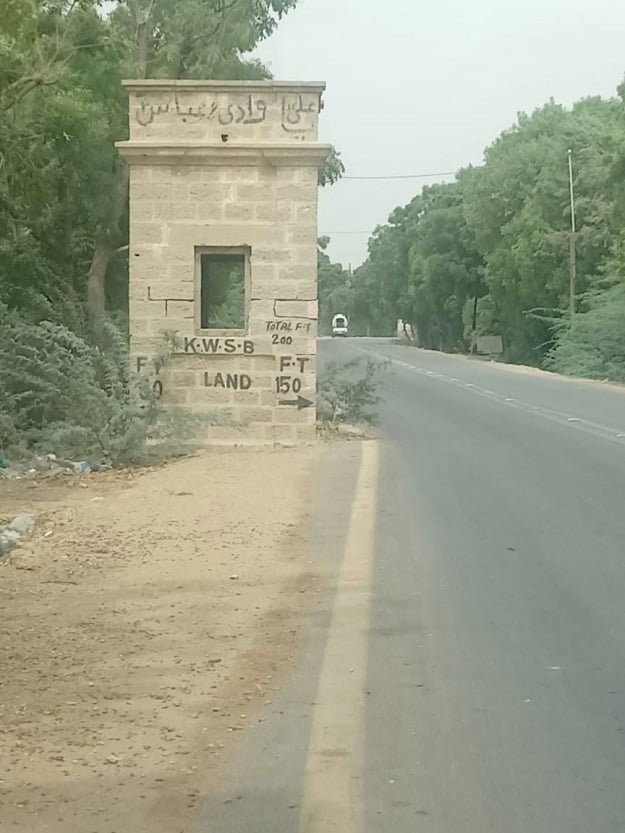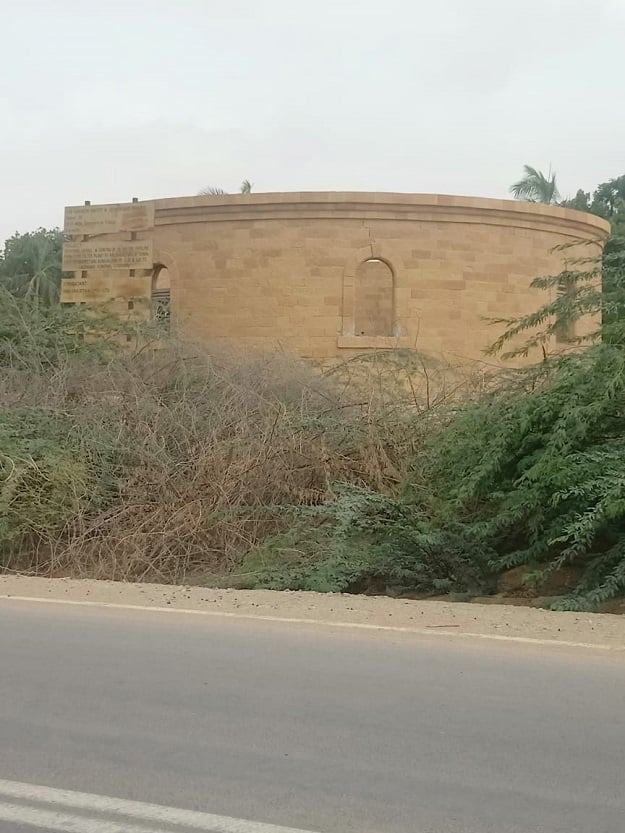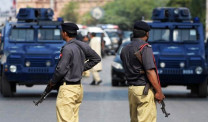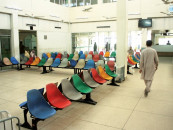Dumlottee Conduit: A neglected historical asset
The 150-year-old water supply system is left in a dilapidated condition by the authorities

During British rule, around 16 wells were built around the Malir River, while expensive filtration galleries - structures built to expedite the transfer of water to or from the soil - were also constructed for an interrupted supply of water to the city. PHOTOS: EXPRESS
Owing to the negligence and lack of interest on the part of the Sindh government, the Karachi Water and Sewerage Board (KWSB) and other institutions, Karachi’s very first water supply system - which holds historical value as it was built by British engineers before the creation of Pakistan - has been left in a derelict condition.
A historical account shows that around 150 years ago, the British dug 15 wells alongside the Malir River at Dumlottee to ensure the smooth supply of water to the city.
Perpetual issue: Leaks in the system create water crisis in Karachi
Although the ancient conduit system was effectively utilised in the past, to supply water to various parts of Karachi, at present, only one well is functional which supplies 500,000 gallons of water to Gadap Town on a daily basis. The Dumlottee Conduit receives water from the Keenjhar Lake.
 PHOTO: EXPRESS
PHOTO: EXPRESSDestruction of the system
Illegal sand mining from riverbeds by the sand and gravel mafia, which unfortunately continues under the guard of the police and influential political figures, not only ruined the infrastructure but also caused environmental issues like erosion and destruction to the aquatic ecosystem in an around the Malir River.
What’s more, the anti-environmental activity also caused the contamination of underground freshwater reserves and pushed the water levels deeper into the earth to mix it with saline water, thus making it unfit for consumption.
After the recent spell of rains, the level of underground water around Malir River rose once again, which enabled farmers of Malir and Gadap towns to irrigate their lands through the conduit’s wells and tube wells.
Speaking to The Express Tribune, a resident of Gadap Town shared that prior to the rains, the water from the conduit had become contaminated because of sand mining.
“Although the rains neutralised the salinity of water, local people of Gadap Town have begun to use the water even for drinking purposes without sending it for a laboratory test,” he said. “The KWSB should immediately test the water and create public awareness about its consumption before some untoward incident takes place.”
An ignored asset
According to irrigation experts, if several wells of the conduit system are reconstructed, it could ensure the supply of 15 to 20 million gallons of water to Karachi on a daily basis. To this end, the KWSB has been making efforts for the past seven years. However, the Sindh government did not approve the project, thus keeping the citizens of Karachi deprived of an effective water supply via the old system.
Quarter of world's population facing extreme water stress
In fact, until the 1970s, Karachi used to receive 20 MGD water via the system but the supply gradually began to decline before coming to a near halt - all because of sheer neglect.
A sturdy construction
During British rule, development works were carried out in the conduit in two phases. Some sixteen wells were built around the Malir River, while expensive filtration galleries - structures built to expedite the transfer of water to or from the soil - were also constructed for an interrupted supply of water to the city.
 PHOTO: EXPRESS
PHOTO: EXPRESSIn the first phase, wells were dug and built near the river at Dumlottee in 1881, under which five million gallons of water was supplied to Karachi Cantonment every day.
The second phase of the construction was started in 1923, under which new wells were built and 15 million gallons of water was supplied to the city. Records show that 16 wells were built at Dumlottee to supply 20 MGD of water to Karachi and a 32-kilometre conduit was also built. This sturdy construction still exists and considered a historic heritage via which water can be supplied to various parts of Karachi if the authorities pay attention to it and consider its reconstruction.
The ancient conduit system stretches from Dumlottee to Malir Cantonment, Safoora Chowrangi, Karachi University, Gulshan Block 6, NIPA Chowrangi, Aziz Bhatti Park, Mashriq Centre, Al-Hilal Society, Old Sabzi Mandi, Kashmir Road and Lines Area.
Published in The Express Tribune, October 3rd, 2019.



















COMMENTS
Comments are moderated and generally will be posted if they are on-topic and not abusive.
For more information, please see our Comments FAQ